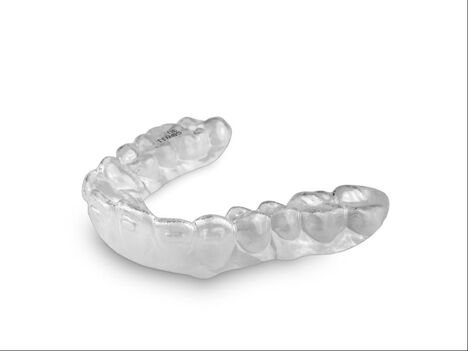WHAT IS ORTHODONTICS?Orthodontics is defined as the branch of dentistry that covers diagnoses, prevention, and treatment of dental and facial irregularities and abnormalities. It is an emerging field in medical science that is also sought out to obtain desired teeth shape or positioning. Orthodontics tools are used to straighten teeth, correct crowded, protruded, and crooked teeth, address wide gaps, align the tips of the teeth, rectify gum imbalance, and improve speech or chewing ability. FORECAST OVERVIEW FOR THE ORTHODONTICS MARKETThis forecast overview is made up of studies conducted by IndustryARC, Precedence Research, the World Health Organization (WHO), and Allied Market Research. A study conducted by IndustryARC focuses on the market for orthodontics from 2018 to 2025. A report by Precedence Research predicts that the global orthodontics market size will grow from $5.99 billion USD in 2021 to $16.2 billion by 2028. The estimated compound annual growth rate (CAGR) is 15.3% from 2021 to 2030. According to the 2018 Global Burden of Disease Study, conducted by the WHO, approximately half of the world’s population is affected by oral diseases. They found that the global orthodontics market breached $4.05 billion in 2018 and estimate the CAGR to be 8.05% during the forecast period 2019-2025. Lastly, Allied Market Research focused on a forecast period of 2021-2030. ORTHODONTICS MARKET SEGMENTATIONThe global orthodontics market is segmented on the basis of type, age group, and region. By type, the market is categorized as such: brackets, archwires, anchorage appliances, and ligatures. Dental brackets are devices to align and straighten the teeth and are further classified into fixed and removable. They serve as handles that hold the archwires and move the teeth. The report by Allied Market Research found that the brackets segment dominated the market in 2020 and is expected to continue due to their advantages and availability in e-commerce stores. It is projected to increase at a CAGR of 7.83% through to 2025. Moreover, anchorage appliances are composed of bands, buccal tubes, and mini-screws. This segment is expected to grow because of increased dental aesthetics and oral hygiene awareness. Lastly, ligatures are categorized into elastomeric ligatures and wire. By age group, the market is categorized into children and adults. In the same report by Allied Market Research, it was found that the children segment dominated the market in 2020 due to the increase of malocclusion within this age group. They are expected to continue growing through the forecast period to 2030. On the other hand, the adult segment is to witness growth as well because of an increase in dental disorders and demand for cosmetic improvements in teeth. By region, the market is analyzed across North America, Europe, Asia-Pacific, and LAMEA (Latin America, the Middle East, and Africa). Overall, it was found by all reports that North America garnered the majority of the share during the forecast periods with 35.53% captured in 2018. The region is expected to continue to dominate due to well-established infrastructure, the presence of key players, increasing per capita income, and the rapidly growing geriatric population. Healthcare infrastructure in the United States is highly developed and they continuously adopt advanced technologies in orthodontic clinics while increasing consumer awareness. In addition, the Asia Pacific region is estimated to be the most opportunistic segment and will register the highest CAGR of 12.8% from 2021 to 2030. Due to an increasing number of dentists, a rise in healthcare expenditures of patients, and large youth and geriatric populations, the Asia Pacific market is expected to grow rapidly. ORTHODONTICS MARKET GROWTH DRIVERS AND DISRUPTIVE TRENDSThere are many factors that contribute to the massive market of orthodontics, including increased geriatric and pediatric populations, a rise in oral disorders and poor hygiene, increasing demand for cosmetic dentistry, growing awareness and number of dental professionals, advancements in technology, and emerging countries for dentistry. Increased geriatric and pediatric populationsAccording to the Rural Health Information Hub, there are over 46 million geriatric people living in the United States alone and it is expected to reach around 90 million by 2050. Because elderly people are more susceptible to dental disorders, the increasing population plays a crucial role in the demand. However, on the opposite side of the age spectrum, the increase in the number of children also owes to the high rate of dental disorder occurrence. The market is significantly driven by children and teens because of the prevalence of dental disorders and the high demand for dental surgeries among that age group. Rise in oral disorders and poor hygieneIn addition, there is a global increase in oral disorders and diseases. According to the WHO, it is estimated that oral diseases affected nearly 3.5 billion of the worldwide population in 2020. The increase in sedentary lifestyles and rising expenditure has led to high consumption of confectionary items. Highly processed and sugary foods are linked to an increase in staining, cavities, decay, and tooth loss. Moreover, tobacco consumption is also on the rise, owing to staining and poor hygiene. Especially in underdeveloped countries, tobacco users are more prone to dental disease. Upsurge in the cosmetic dentistry industryFurthermore, there is an increasing number of surgeries and treatments to address physical deformities, promoting orthodontics and oral maxillo-facial corrections. Increasing incidences of malpositioned teeth, malocclusion, musculoskeletal disorders, and complete edentulism greatly impact the demand for orthodontic treatments. Underbite and overbite due to crooked teeth are one of the most common facial distortions globally. The increasing adoption of dental braces paired with the rapidly growing penetration of clear or invisible aligners is a key player in shifting the focus toward cosmetic dentistry. On a related note, global incidences of road traffic accidents are increasingly being reported. Especially in developing and underdeveloped markets, there is a significant growth of accidents affecting the mouth and oral structures. The World Health Organization reported that approximately 93% of road traffic accidents occur in low and middle-income countries. In turn, cosmetic demand has increased to address these accident-caused deformities. Increase in the number of awareness programs and the number of orthodontistsIn many of the more developed countries, such as the United States, their government has been actively increasing awareness in regard to oral healthcare. Programs such as the American Dental Association (ADA) promote oral health care and oral disease prevention, leading people to be more inclined to take care of their teeth than they were before. Collaborating with key market players to raise awareness of dental products, potential diseases, and damages, the American government has progressively been launching pro-dental care campaigns. In addition, tax benefits are also provided to those key market players globally. In turn, there has been a growth of dental clinics and orthodontists. The ADA reports that by the end of 2017, there were around 10,568 active orthodontists in the US. Worldwide, there has been an increase in dental tourism, providing diagnosis and treatment for dental diseases. Developments in technology and product approvalsSignificant developments in dental technology have allowed orthodontists and other dental professionals to achieve better solutions through efficient devices that require less time to operate and perform, resulting in improved quality of treatment. Three-dimensional (3D) scanners, virtual imaging, the Internet of Things (IoT), wireless connectivity, and artificial intelligence (AI) in orthodontics tools and diagnostic devices are used to visualize, customize, and communicate treatment plans designed to achieve predictable outcomes. Additionally, the rising investments of the top market players in the research and development of advanced orthodontics products and equipment are resulting in more and more product approvals for dentistry. Market potential in emerging countriesLastly, augmenting the orthodontics market is the huge untapped market potential in emerging countries, such as China and India. As mentioned above, The Asia-Pacific market region is estimated to be the most opportunistic segment because of the growing number of dentists, the rise in healthcare expenditures, and large youth and geriatric populations. ORTHODONTICS MARKET KEY PLAYERSSome of the prominent players in the global orthodontics market include:
ORTHODONTICS MARKET CHALLENGESDespite facial and dental improvements that orthodontics treatments bring, they can sometimes cause side effects such as root resorption, toothache, uneven coloration due to braces, periodontal disease, or tooth sensitivity. However, advancements in technological innovations for dentistry will effectively reduce restraints and continue to augment the market in the upcoming years. Dental Laboratory Near MeLooking for local dental labs that specialize in orthodontic services? The Dental Lab is a leading dental lab in the United States. We deliver all over the nation with our fast and reliable shipping services, making us a dental laboratory near you--no matter where you are. The Dental Lab is a proud provider of dental restoration products–including orthodontic products, such as Argen Clear Aligners, and Hawley Retainers. View the products page for a greater scope of our restorative services. Please do not hesitate to contact us for further questions or concerns. Sources: Orthodontics Market - Forecast(2022 - 2027) Global Burden of Disease (GBD) Orthodontics Market by Age Group and Type Orthodontics Market (By Product Type: Instruments and Supplies [Fixed and Removable] Keywords:
dental laboratory near me, orthodontics market, the dental lab, local dental labs, aligners, brackets, argen
0 Comments
Leave a Reply. |






